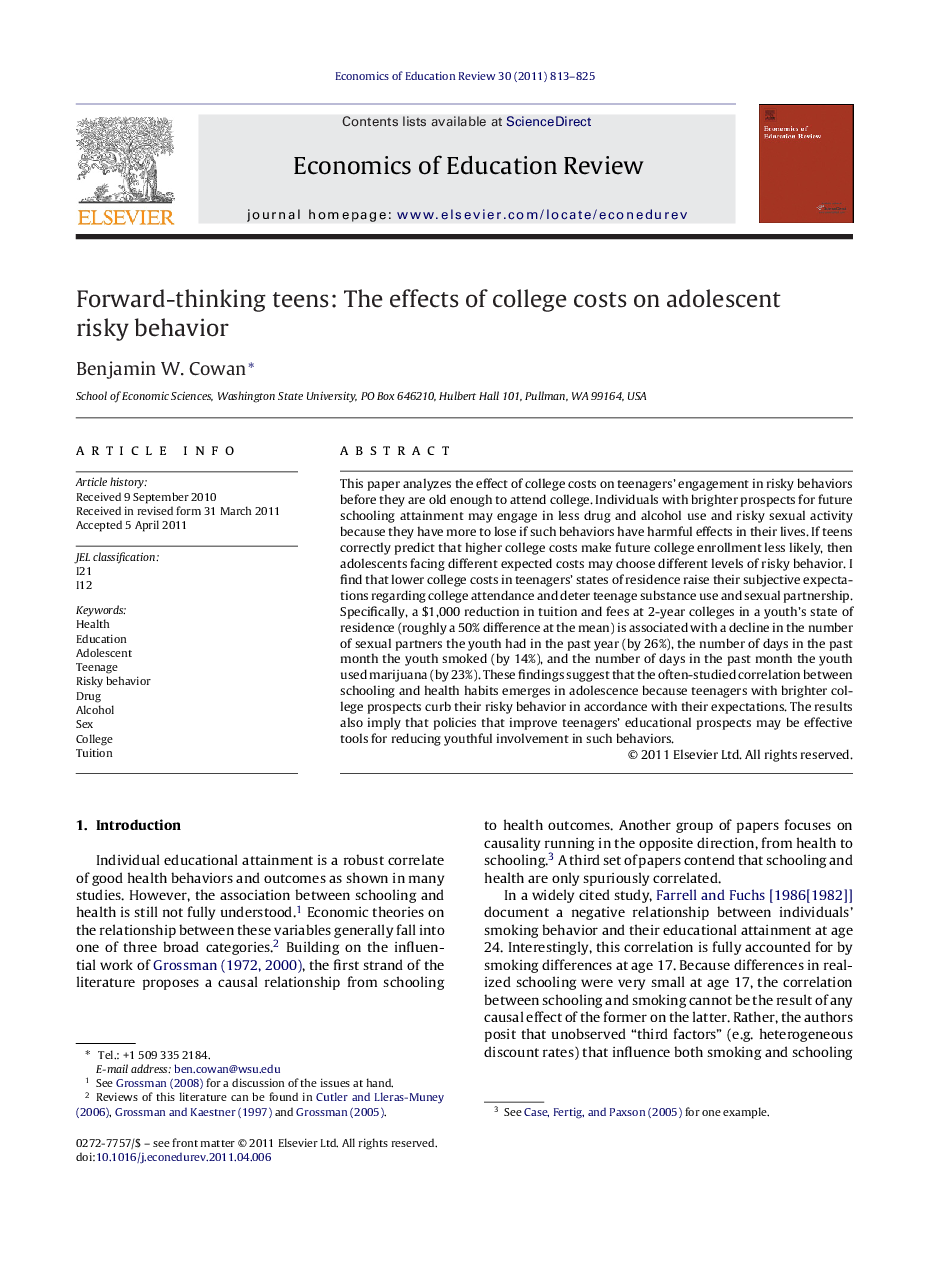| کد مقاله | کد نشریه | سال انتشار | مقاله انگلیسی | نسخه تمام متن |
|---|---|---|---|---|
| 354681 | 1434839 | 2011 | 13 صفحه PDF | دانلود رایگان |

This paper analyzes the effect of college costs on teenagers’ engagement in risky behaviors before they are old enough to attend college. Individuals with brighter prospects for future schooling attainment may engage in less drug and alcohol use and risky sexual activity because they have more to lose if such behaviors have harmful effects in their lives. If teens correctly predict that higher college costs make future college enrollment less likely, then adolescents facing different expected costs may choose different levels of risky behavior. I find that lower college costs in teenagers’ states of residence raise their subjective expectations regarding college attendance and deter teenage substance use and sexual partnership. Specifically, a $1,000 reduction in tuition and fees at 2-year colleges in a youth's state of residence (roughly a 50% difference at the mean) is associated with a decline in the number of sexual partners the youth had in the past year (by 26%), the number of days in the past month the youth smoked (by 14%), and the number of days in the past month the youth used marijuana (by 23%). These findings suggest that the often-studied correlation between schooling and health habits emerges in adolescence because teenagers with brighter college prospects curb their risky behavior in accordance with their expectations. The results also imply that policies that improve teenagers’ educational prospects may be effective tools for reducing youthful involvement in such behaviors.
► I examine the effect of college costs on adolescent risky behavior.
► Lower 2-year college tuition rates raise teenagers’ college expectations and reduce their engagement in sexual activity, smoking, heavy drinking, and marijuana use.
► These findings suggest that expectations of future schooling influence risky health behaviors, contributing to the observed correlation between adult health and schooling attainment.
Journal: Economics of Education Review - Volume 30, Issue 5, October 2011, Pages 813–825